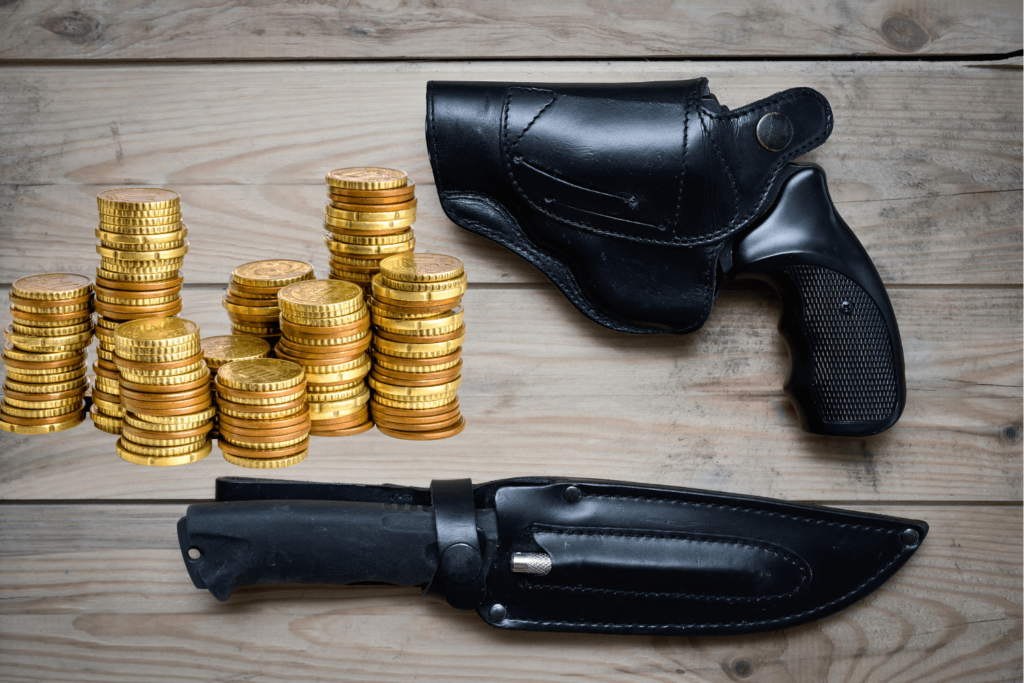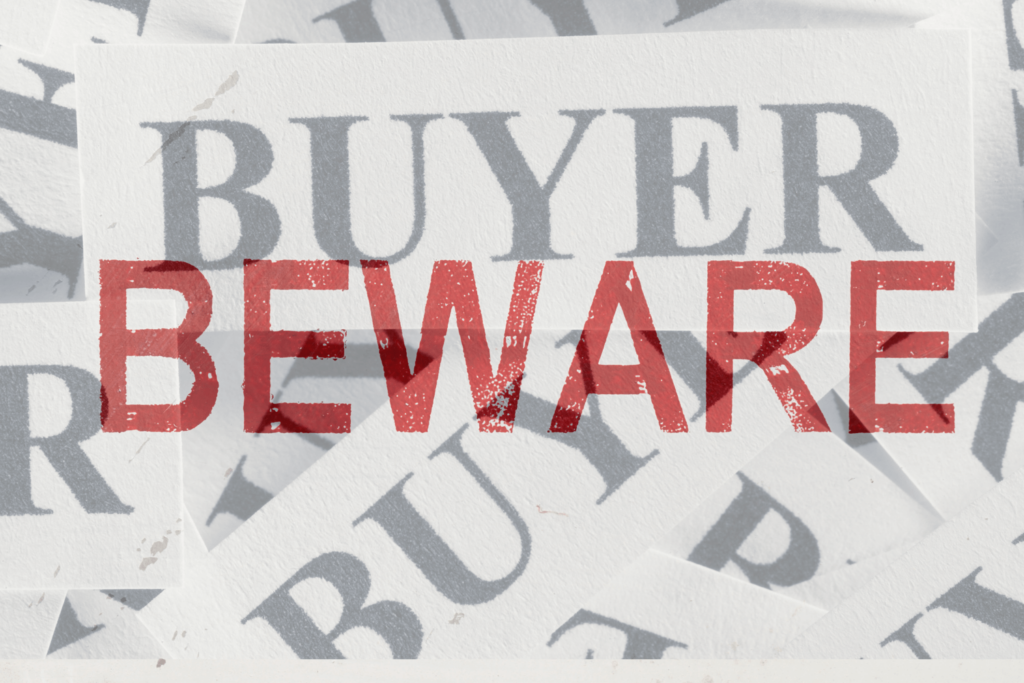


If you want to make sure you’re getting a great deal at a gun show, you need to know how to spot a counterfeit. Midwest Arms Collector Gun Shows are unique retail environments where independent vendors can rent table space to sell their goods and services. We are strong believers in the free market, but along with those freedoms comes a certain amount of risk. Here’s what you need to know about fake knives, guns, or counterfeit money and how to avoid becoming a victim.

Buyer beware. It’s not just a warning but also an admonition: buyer, be aware. The goods and services at our shows are presented for sale by independent vendors who rent table space. While we do our best to make sure we’re renting those tables to honest people who share our values of fair dealing in the exchange of goods, it’s ultimately up to the customer who does business with them to make sure they know the deal they’re getting and to decide if that deal is worth it. That means doing your research, setting your boundaries, and making a calm, rational decision about your purchase before and during the transaction.
They go by a lot of names. Knock-offs, generics, no-names, look-alikes–you may not have spotted a counterfeit unless it’s being sold or advertised as the real deal. Intellectual property laws aren’t always cut and dry about when a similar product crosses the line to copyright infringement. In some cases, the aspects being copied may not be patentable or able to be trademarked.
Knock-off gear is designed to look like the original products, but they’re often offered far cheaper. Depending on the quality standards of the fake item’s manufacturer, you may get a deal that saves you money or a piece of junk. In gun terms, think about Norinco, the Chinese firearm manufacturer known in North America for their copies of, well, a lot of different guns.
No one would say they represent the same value as an authentic AK-47, Sig, or whatever gun the Norinco in question is mentioning, but in general, they point, go boom, and results are repeatable. Each is also prominently stamped with Norinco markings. They are exactly what they are–low-cost copies or knock-offs–and they don’t claim otherwise. That’s why they aren’t counterfeits.
Some counterfeits are easy to spot, while others appear almost legitimate. To complicate matters, many vendors may have unique finds or rare items that are unfamiliar to most buyers. While different products may have different warning signs that you need to pay close attention to, here are a few general red flags to keep in mind as you browse the sales floor:
To spot a counterfeit gun, pay attention to the details. Counterfeits can look very similar from a few feet away, but up close, it’s the little things that start to stand out. Slide serrations may be uneven in height or depth. Print that is supposed to be etched may instead be stamped. Counterfeits frequently feature printing that’s unevenly spaced, has some letters deeper than others, or uses a font different from the official version of the product. They may also have “wrong” external parts, such as slide locks or safeties that just aren’t quite right.
Knives are more commonly counterfeited than firearms because they are less regulated, take less effort to reproduce, and can be sold at a lower price point for more volume. A fake blade can put a real crimp on any knife collection. As an example of what to watch for, let’s take a look at one of the most copied and counterfeited knives in the world, the Buck 110 Folding Hunter and its smaller familial cousins. This lockback has been around for generations at this point, with the familiar ebony wood and brass hardware, clip point, and leather sheath.
The first thing you want to verify is an appropriate maker’s mark, in this case, the word “Buck” stamped into the blade. Depending on whether it’s new, used, or antique, there may be a date code, USA, or the model number 110 (often with a plus sign). What you won’t see is the name of a foreign country, misspellings, or ink that is already wearing off. You may see different grip styles, but these should coincide with appropriate special issues.

Money, coins, and bullion are common collectibles found at gun shows because they’re so popular with collectors. Due to their historical significance and high-value portability for trade in times of emergency, gun owners view them for their cultural and monetary value. With such a wide array of products issued by both current and defunct nations, it can be hard to spot counterfeit money.
Your best bet is to stick with trusted professional dealers who have a legitimate online or brick-and-mortar presence that will still be around after the show. Watch for incongruities, like marks from the wrong mint for a given date or misspelled words. Use your smartphone to research an item at the table–wi-fi is available at most venues–and don’t let yourself be pressured into a deal. Remember, if it’s too good to be true, it probably is.
Gun shows can be great places to find instructors and businesses that offer firearms training, gunsmithing and finishing services, and guided hunts. These can be a great way to upgrade your shooting lifestyle, but make sure you know who you’re dealing with and what services you’re getting.
Ask about certifications and licensures for the business and instructors providing the training. Find out what benefits the classes have and if they meet any state guidelines or requirements. For gunsmiths and finishers, ask for references, certifications, or affiliations. Finally, when considering hunting lands, make sure you understand what is being provided, any guarantees that are offered, and what kind of access is available so you can ensure you can reach your contracted area. Likewise, guides should be able to tell you what services they’ll be providing in detail and provide you with a list of any certifications, registrations, or affiliations that establish they operate a legitimate guide business.
While you need to know how to spot a counterfeit, we work hard to create a show where honest people–both vendors and attendees–can come together to do business and buy, sell, or trade guns, knives, and just about everything else. Subscribe to our newsletter to get the latest gun show news delivered to your inbox. There’s an event on our gun show calendar near you that’s coming up soon. Order your tickets online to your local MAC Shows Gun Show today.

Text STCHARLES to 620-205-5776 to get $3 off your ticket to the St. Charles Gun Show when you buy your tickets online!